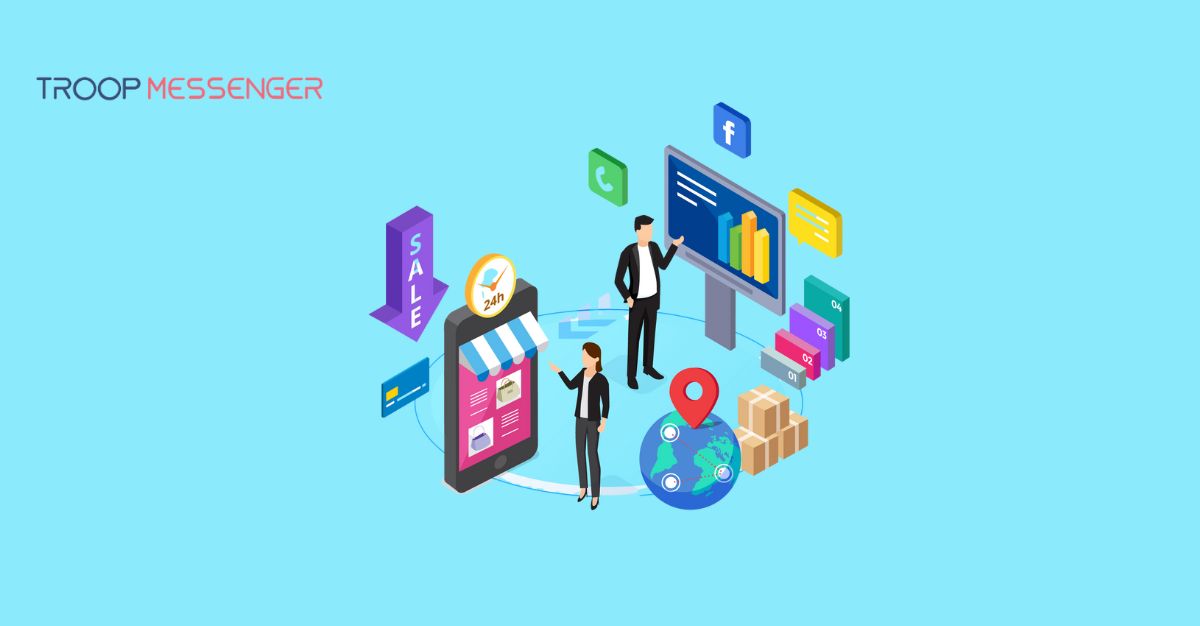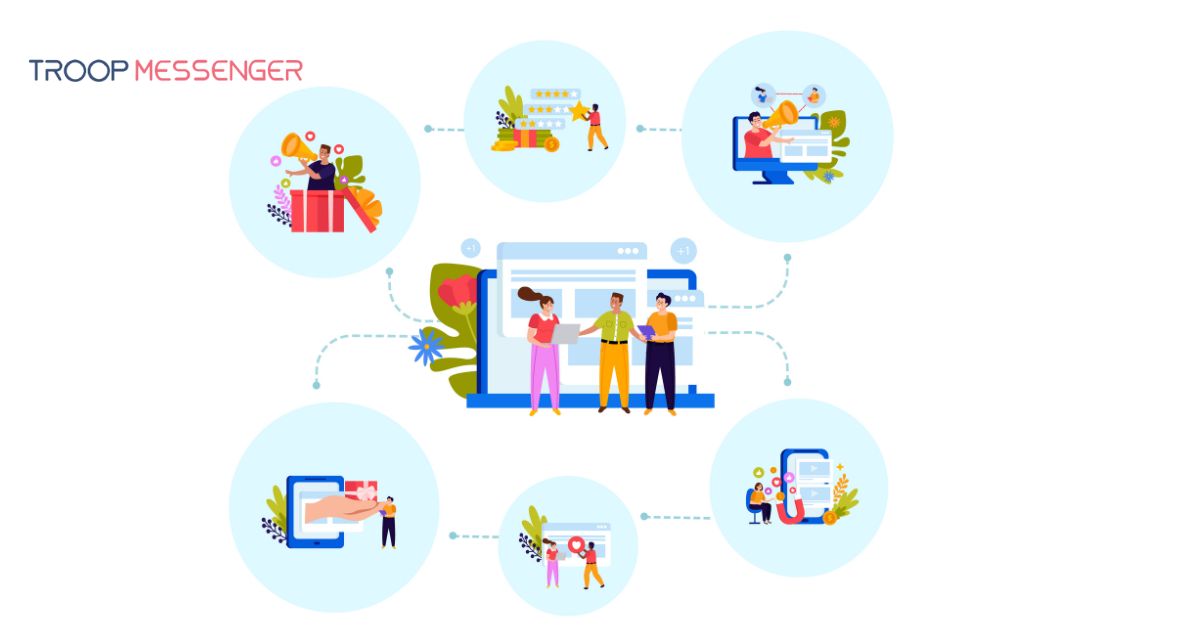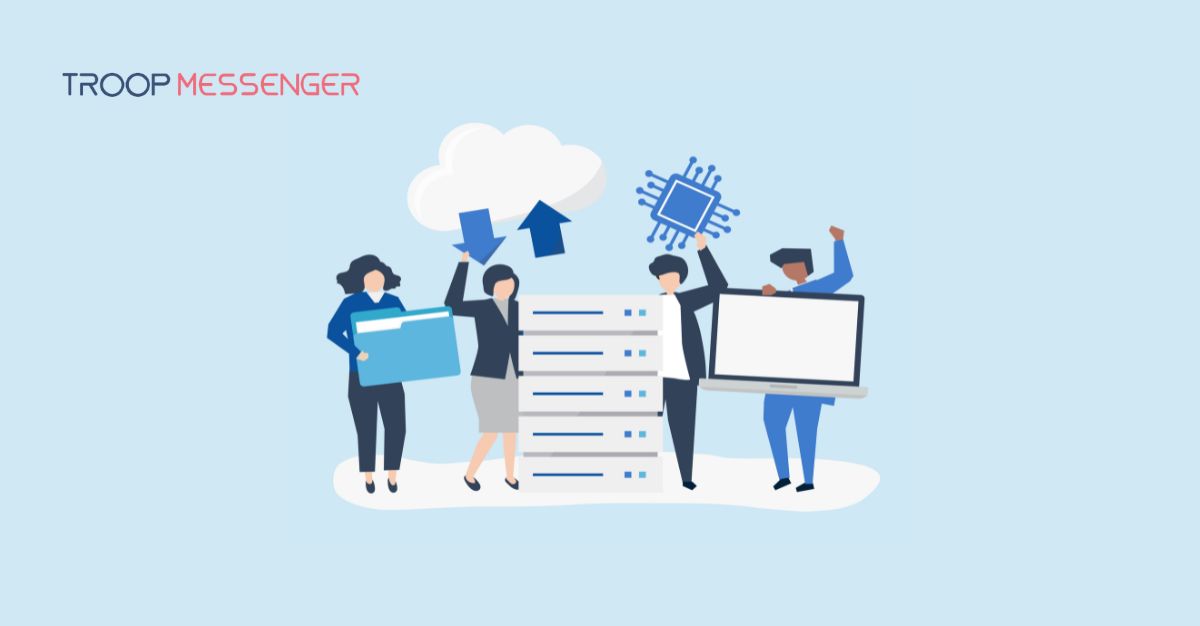Connect with us

How to Optimize Multi-channel Communication for Online Retail
As the digital era is growing, customers demand Multi-channel Communication. Consumers are looking for smooth and personalized experiences from email to SMS and social media. Retailers have to optimize communication over each of these channels to remain competitive.
A robust multi-channel communication approach leads to higher customer satisfaction and sales, as well as better lifetime value. But coordinating and keeping these channels in sync can be tricky. In this article, we look at three core approaches for maximizing your multi-channel communication strategy; including how to run effective SMS campaigns for e-commerce and email strategies that complement mobile messages.
What is Multi-channel Communication for Online Retail?
Multi channel communication is a way of communicating with your customer and keeping in touch with them using multiple platforms like email, sms, social media, live chat and more. Understandably, for online sellers optimizing these channels would mean aligning their strategy so that the customer experience remains, as close to, the same across all platforms.
This is where a well-known multi-channel communication strategy comes into the picture, as it can not only enhance customer engagement when done right, but also eliminate friction in the buying journey and improve conversions. Poor customer engagement strategies can build burden on the business, as they tend to deliver shredded communication, not conveying a compelling storyline, confusing the customers and losing their global approach.
How to Optimize Multi-channel Communication for Online Retail - Detailed Guide
1. Create Powerful SMS Campaigns for Your E-commerce Store
Effective SMS campaigns for e-commerce can be a game changer in terms of getting customers engaged immediately. Text messages boast the highest open rate, making them a great asset for time-sensitive deals, offers, promotions and reminders. SMS can be a quick and direct way for retailers to connect with their audiences.
A good SMS campaign must be short, clear, and with a well-defined CTA. For example, transferring an SMS with a unique discount code can trigger the immediate act of an abandoned buying or a repeat purchasing.
Group people according to their purchase habit or any demographic when targeting an SMS campaign in order to make it more effective. So, if a customer bought shoes, you can send them a text message offering connected things – socks or shoe care stuff.
Example:
The retailer can send an SMS alert for a flash sale with a store link and force customers for action.
2. Use Automation to Have Consistent Flow
One of the most important features of automation is optimizing communication over multiple channels. No more mess and inconsistency: When you automate your SMS, email, and mobile messaging campaigns, it helps you control the messaging and delivery time across all platforms. You can create workflows with automation tools based on customer behaviour — like follow up email or SMS reminders after a cart abandonment.
For instance, if a customer places items in their cart but does not finish checking out, you can automatically shoot them an SMS reminder, followed by an email with a discount. By sending multiple reminders on various channels you ensure that the customer will convert.
The best SMS campaigns for e-commerce can be triggered automatically – such as an abandoned cart recovery text or when a product comes back in stock. Just like that, you can schedule email campaigns to be executed on certain days, which helps in maintaining continuity and regularity of message to your audience.
Example:
Abandoned cart flow, for instance, could send an SMS reminder first and then an email containing product information and an offer.
3. Custom Communication Over Multiple Channels
Personalization is at the heart of multi-channel communication success. Shoppers nowadays commonly want brands to know what they like and provide related products or promotions. If the data collection is done correctly on past purchases, browsing history and demographics of the consumers, retailers can tailor the SMS, email, and mobile messaging campaigns.
For instance, you can send an SMS to a customer who bought a jacket with a discount offer on accessories. Likewise, send an email after they purchase suggesting similar or complementary products based on their purchase history.
Not only does it make conversion more likely, it will create a feeling of loyalty and trust. Revitalized customers are more likely to return to a store, which relates to their immediate needs and choices?
Example:
Send tailored SMS and email campaigns suggesting items such as those that they previously purchased.
4. Use Mobile Apps to Reach Customers Better
A myriad of e-commerce businesses have created mobile apps in order to offer a smooth shopping experience. Bringing your SMS and email marketing to your app can synchronize it all for the benefit of your customers. Mobile apps come with the advantages of sending push notifications and reaching out to customers instantly.
For example, you can send an SMS regarding a promotion for a short duration and use the app to push in-app notification about the same offer too to reinforce your message. What the apps also give, is the ability to communicate with a personalized flair depending on what your app is used for, whether you sending selected product recommendations or a promotion.
Example:
A new product can be brought to attention using a mobile app push notification, then be followed up with an SMS containing a discount, paired with an email that provides further details.
5. Create email Tactics that Work with Mobile
Still, email marketing is one of the most potent weapons in the armor of e-commerce businesses, and more profound communication methods than SMS. However, it’s essential to create email strategies that complement mobile messaging. Sending a well-planned email strategy should help strengthen the SMS communication and lead customers further down the sales funnel.
Over an instant offer SMS, you can send a more planned email about the offer, followed by further product suggestions and a structured CTA. This complementary strategy means customers get a consistent message across every channel.
Also be sure to optimize your emails for mobile use. Because so many customers are reading their emails on a smartphone, emails should be easy to read and navigate, even, improve for smaller screens.
Example:
Post an SMS alert of a sale; follow up with an Email containing clear pictures of products, detailed descriptions, and a faciles to purchase link.
6. Monitor and measure performance of all channels
It is necessary to follow and analyze the effectiveness of each channel in order to optimize your multi-channel communication strategy. You can use analytics tools to understand how your SMS campaigns compare alongside email strategies and even mobile messaging. You can use open rates, click-through rates and conversion rates to analyse what works and what needs a little bit of work.
If your SMS campaigns convert better than email ones do, you can ramp up your SMS marketing accordingly. On the flip side, if your email performance is doing better, you can improve your email copy and subject lines.
Example:
Tracking performance of email versus SMS campaign can help understand which channel brings more conversions.
7. Build 360-degree customer journeys across channels
By taking an omnichannel approach to communication, you ensure that your messaging remains consistent across each communication platform. No matter how a customer is communicating with your store—via SMS, email or social media—the messaging should be cohesive and flow with the customer journey.
One customer can interact with a single campaign via email promoting a discount to the same customer through an SMS reminder, then a push notification through the mobile app. It creates a trickle-down in which the customer receives a seamless experience as they are along with their buying process while they stay attracted with them.
Example:
The ability to establish an omnichannel experience to provide consistent messaging to the customer on each front delivering that same message increases engagement.
8. Connect Customer Support with Communication Channels
Beyond order fulfilment, good customer support is also key to retaining customers. Enabling customer support in your SMS, email, and other mobile messaging campaigns gives customers quick access to help. For instance, if someone wants to reach support for a query about a product, and if there is a link sent to the email or SMS, they can click directly to reach the support.
Offering support options within each communication channel provides a better responsive and customer-friendly experience.
Example:
It provides customers with a quick way to seek assistance by incorporating a “contact us” link on your SMS as well as email campaigns.
9. Get users to generate content on different channels.
UGC or User generated content is a highly effective tool in the hands of online retailers. To drive engagement, customers can be encouraged to write reviews, share photos and write testimonials, and so on. Incorporating UGC into your SMS and email campaigns can help entice additional customers to purchase.
For instance, you can shoot out an email or SMS follow-up to customers to post a review or picture of their purchase. When you use this content in future campaigns, you create a social proof and urge other customers to get involved.
Example:
Trigger reminders by SMS and email for customers to upload their product photos and enter a competition.
Yotpo: An Industry-Leading eCommerce Marketing Solution
Yotpo also offers a full-service solution for customer reviews, loyalty, SMS, and email marketing all in one place. With this revolutionary platform, an online retailer can now seamlessly manage and automate its multi-channel communication strategy.
With its Shopify integration, the platform enables tailored messaging, such as sending emails after purchase, requesting product reviews, and promoting loyalty programs. Combining their powerful SMS campaigns for e-commerce with email marketing strategy, Yotpo enables companies to retain customers, improve conversions, and create an enduring customer relationship.
Example:
Yotpo can automatically send an email requesting a product review after using it, followed by an SMS reminder that will reinforce contact with the brand.
Conclusion
The secret to cracking the online retail marketing game is optimizing multi-channel communication. When retailers layer successful e-commerce SMS campaigns and an email strategy that complements mobile messages, the result is a connected, personalized experience that engages customers and increases conversions.
Tools such as Yotpo and other integrated marketing solutions come in handy in these scenarios, to ensure similar messaging everywhere, and results across all channels. When it comes to the online retail business, the 1 key to growth and developing long-lasting customer relationships is multi-channel communication.








